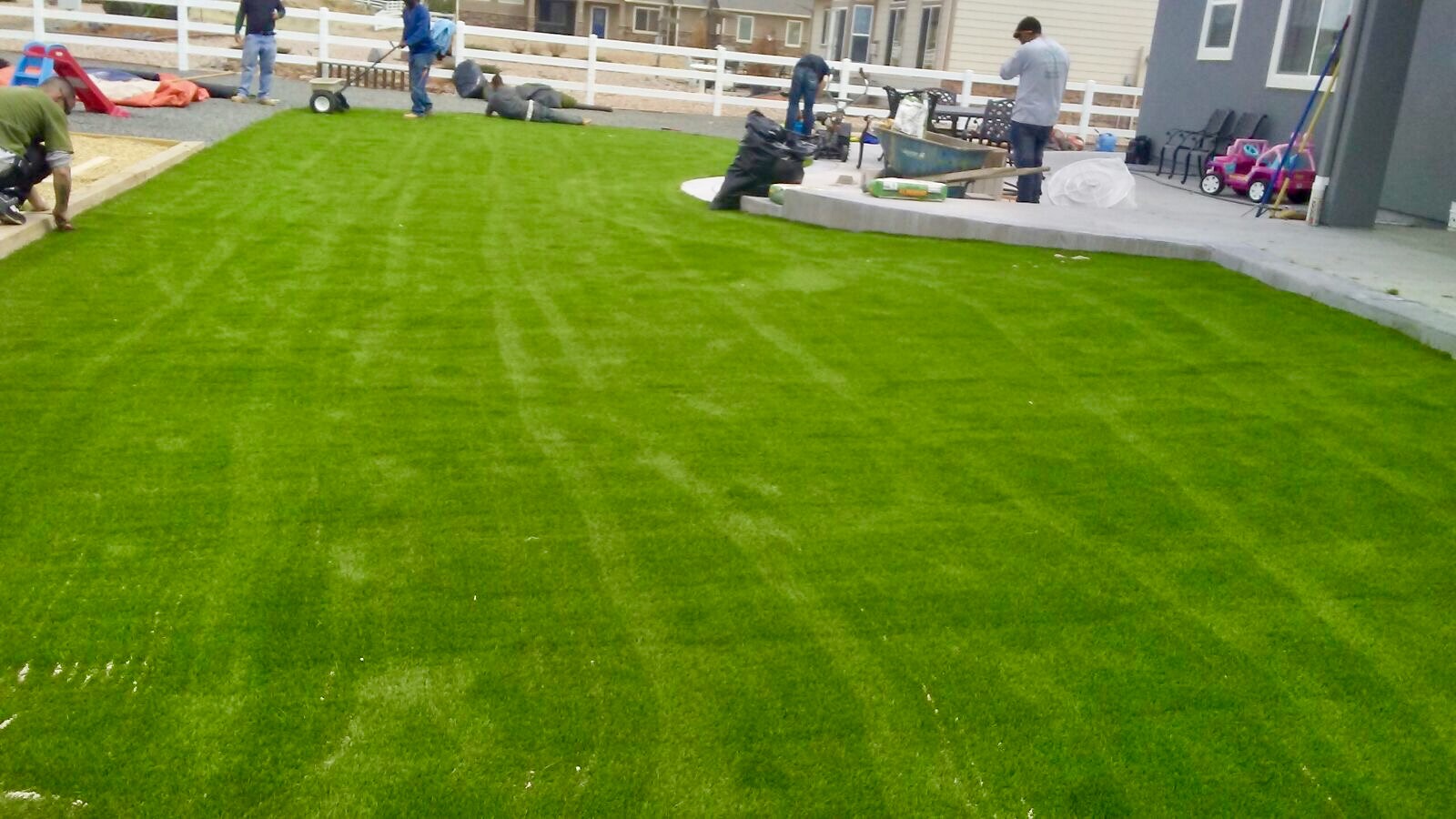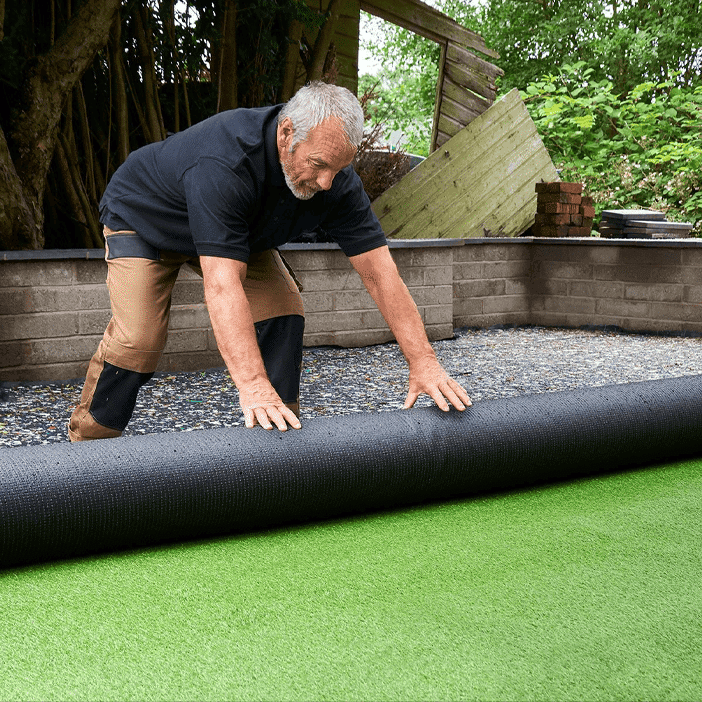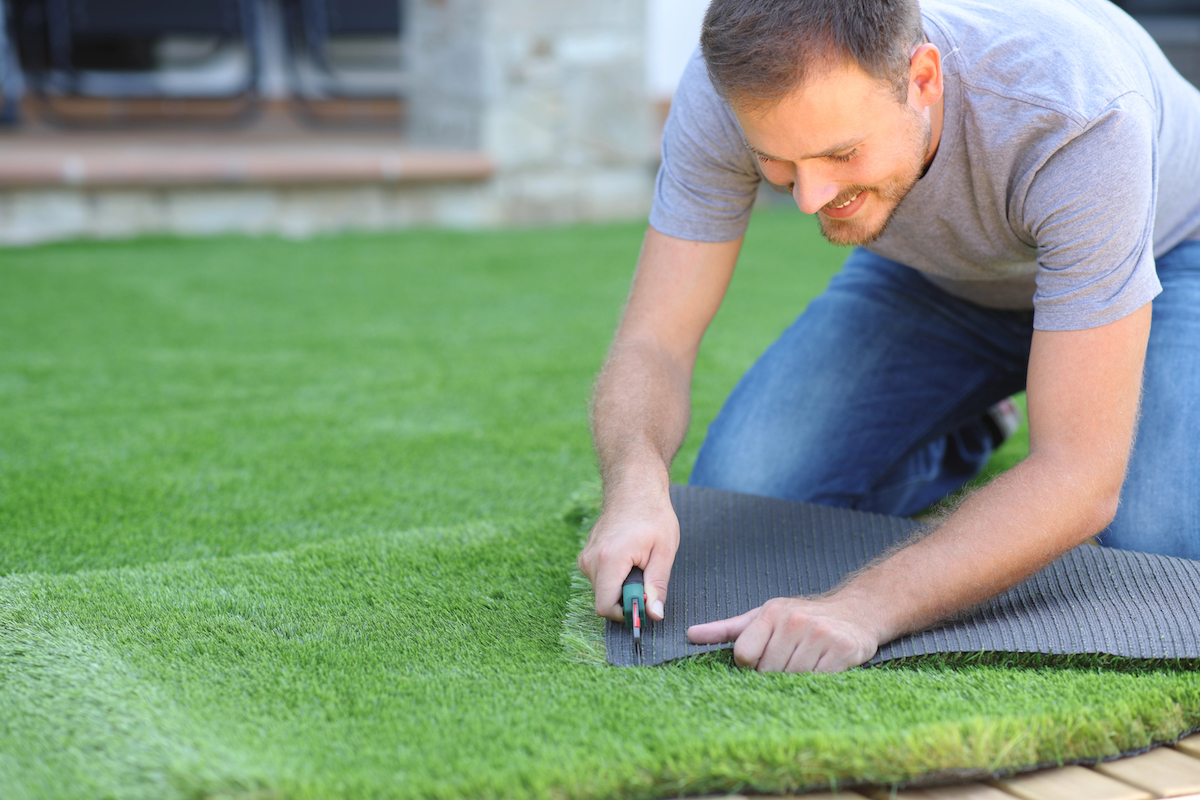Enhance Your Outdoor Space with Arizona Artificial Turf for a Lush Green Look
Enhance Your Outdoor Space with Arizona Artificial Turf for a Lush Green Look
Blog Article
Delve Into the Environmental Conveniences of Opting for Artificial Lawn Solutions
The adoption of synthetic grass remedies presents a compelling chance to attend to pushing environmental difficulties. By dramatically decreasing water usage and minimizing the application of unsafe chemicals, these alternatives not only promote sustainable landscape design yet additionally shield neighborhood communities.
Water Preservation Perks
Among one of the most considerable advantages of synthetic grass is its capability to save water. Standard lawn lawns need significant watering, specifically in areas prone to dry spell or water constraints. In comparison, synthetic grass does not require watering, significantly reducing the overall need for water sources. This attribute is especially helpful in deserts where water scarcity is a pressing concern.
By getting rid of the requirement for regular watering, synthetic lawn adds to lasting landscape practices and assists mitigate the ecological effect of excessive water usage. Moreover, the conservation of water encompasses the decrease of runoff, which can cause dirt erosion and river pollution.
Furthermore, the setup of synthetic grass permits municipalities and house owners to designate water sources extra efficiently, concentrating on essential uses such as drinking water and farming. The change towards synthetic grass not just promotes liable water use but also lines up with wider environmental goals aimed at preserving natural resources.
As neighborhoods progressively prioritize sustainability, the water conservation benefits of synthetic grass present an engaging case for its adoption in industrial and household landscape design tasks.
Minimized Chemical Use
The transition to synthetic turf considerably reduces the dependence on chemical therapies frequently utilized in natural lawn upkeep. Standard grass administration normally entails the application of herbicides, chemicals, and plant foods to advertise growth and control pests. These chemicals can pose risks to human wellness, neighborhood wildlife, and the environment, adding to dirt and water contamination.
In contrast, man-made lawn gets rid of the demand for these dangerous substances. By minimizing the launch of artificial compounds into the ecological community, artificial lawn promotes healthier dirt and water systems.
In addition, the lack of chemical runoff connected with synthetic grass installations aids protect regional rivers from pollution, sustaining aquatic life and preserving biodiversity. Turf installation phoenix az. As neighborhoods increasingly focus on lasting practices, going with synthetic grass provides a sensible solution that aligns with environmental conservation goals. With this shift, homeowner can appreciate rich eco-friendly spaces without compromising eco-friendly health and wellness, leading the way for an extra sustainable future
Reduced Carbon Footprint

Additionally, the installment of fabricated turf can result in significant water conservation. Natural lawns require significant quantities of water for watering, which not just includes in the carbon impact related to water extraction and therapy yet additionally pressures regional water resources. On the other hand, synthetic grass requires very little maintenance, needing no watering, therefore dramatically reducing water use and its connected power expenses.
Furthermore, the durability of man-made turf contributes to its reduced carbon impact. With a lifespan of up to 15 years or more, the need for frequent substitutes is lessened, causing much less waste and reduced energy consumption in production and getting rid of standard yard options. In general, synthetic grass presents a lasting alternative for ecologically conscious landscape design.
Environment Conservation
Habitat preservation is a crucial consideration in the debate over landscaping selections, especially when comparing synthetic grass to all-natural turf. All-natural lawn lawns often require considerable upkeep, including using pesticides, herbicides, and fertilizers, which can detrimentally affect regional environments. These chemicals can seep into the dirt and rivers, harming indigenous flora and animals and interfering with regional environments.
Fabricated lawn eliminates the need for hazardous chemicals, thus shielding close-by wild animals and maintaining the integrity of surrounding ecological communities. The installation of synthetic grass can lead to the conversion of previous lawn areas into more biodiverse landscapes, such as pollinator gardens or native plant areas, which can support neighborhood wild animals.
Inevitably, the change to synthetic grass not just saves water and minimizes upkeep initiatives however likewise fosters a more unified relationship in between human tasks and the native environment, advertising environment preservation at the same time.
Long-Term Sustainability
Lasting sustainability is a crucial element in assessing the advantages of synthetic grass over conventional grass yards. One of one of the most considerable benefits of synthetic lawn is its longevity; it can last approximately 15-20 years with very little maintenance, whereas natural turf calls for regular reseeding and replacement. This long life minimizes the requirement for constant sources, such as water, fertilizers, and chemicals, which are necessary for preserving a healthy and balanced turf yard.
Furthermore, synthetic grass adds to a reduction in carbon discharges related to yard care devices. Traditional grass typically call for gas-powered mowers, trimmers, and blowers, all of which add to air pollution. Arizona turf. On the other hand, artificial grass removes the requirement for such devices, promoting a cleaner atmosphere
In addition, the production of synthetic grass increasingly uses recycled products, boosting its sustainability profile. As producers embrace green practices, the environmental impact of fabricated grass proceeds to you can try here lessen.

Conclusion
The fostering of synthetic grass options presents substantial environmental benefits, including significant water conservation, decreased dependence on dangerous chemicals, and a lower carbon impact. Man-made turf aids in maintaining natural habitats by minimizing land disruption and promoting long-lasting sustainability via the use of long lasting materials. Jointly, these variables underscore the capacity of synthetic grass to contribute positively to ecological wellness and offer a practical choice to traditional landscaping methods in an increasingly resource-conscious globe.
In comparison, artificial grass does not require watering, significantly minimizing the overall demand for water resources. By lessening the launch of artificial compounds right into the ecological community, artificial turf promotes healthier dirt and water systems.
Furthermore, the installation of synthetic grass can result in considerable water conservation. In comparison, man-made lawn requires marginal upkeep, requiring no watering, thus substantially minimizing water use and check out here its connected energy prices.

Report this page